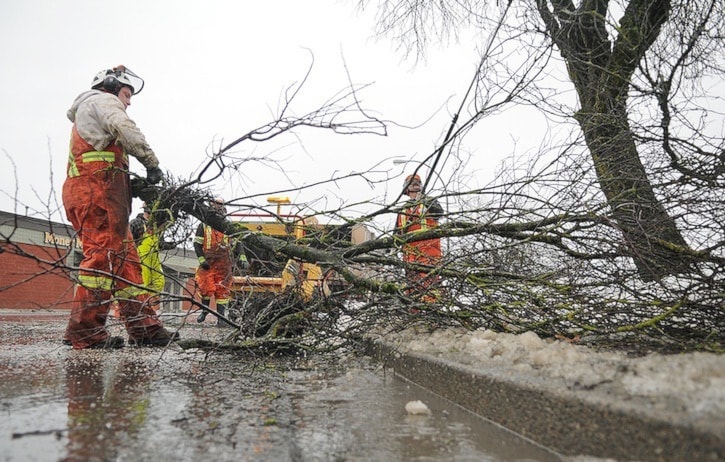Memories of the 2017 ice storm may already be fading, but the cleanup across Chilliwack will drag on for months.
More than 100 civic trees came crashing down in all corners of Chilliwack as result of the storm, from downtown to the hillsides, and out to Greendale.
Several hundred other trees were badly damaged, and will eventually have to be taken down by city crews.
The scale of the devastation was "massive" due to the freezing rain, according to City of Chilliwack officials.
Many street and park trees have been damaged to the point where they won't survive. Arborists will be assessing the damage after the storm cleanup is almost finished.
In fact, crews will be dealing with tree cleanup for the next three months.
When city councillor Chris Kloot saw the devastation of so many beloved downtown trees, including the iconic plum trees on Spadina Avenue, he tweeted about it.
"Pretty but evil & dressed in lace. Saddened to see all the damage to trees around town. It's dangerous out there," Kloot wrote on social media on Feb. 9.
The phenomenon of "ice break" as it's known by foresters and arborists, is when a smooth deposit of ice encases a tree, and the ice build-up can increase the weight of branches up to 30 times. The accumulation of snow or glaze ice in the crown of the tree causes compression stress on the stem, and may cause part of the tree to bend over if the stem is not perfectly straight.
Downed trees and power lines kept crews busy across Chilliwack.
A week ago crews were especially busy. Here are the numbers: On cleanup duty were 64 city staff members, 20 contracted staff, 25 units of equipment and 12 contracted machines working. Overnight 30 staff worked a 12-hour shift with 25 units of equipment and eight contracted machines.
Friday they were also clearing the BC Transit bus stops.
Chilliwack Fire Department fielded 150 calls that afternoon, many of which were for downed power lines. To give folks an idea, fire officials get an average of 200 calls per month typically.
A 2008 study showed that tree species can be categorized based on how likely they are to fail in ice storms. Most susceptible are trees like silver maples, eastern cottonwoods, black oaks, black cherry and willow trees. Middling susceptibility includes eastern white pine, red maple, sugar maple and tamaracks.
However resistant to ice damage are trees with coarse branching structure, which accumulate less ice, such as black walnut and catalpa or those with a conical shape, like spruce and larch; and trees of “small stature,” such as ironwood and blue beech.
Storm cleanup can be complicated. Crews will pick up fallen brush and remove branches that have broken off, or are only partially attached to the tree. Some branches will be pruned off, and cut back to where they meet a larger branch or the trunk itself. And the most hazardous trees, those that have suffered catastrophic damage, will have to come down.
